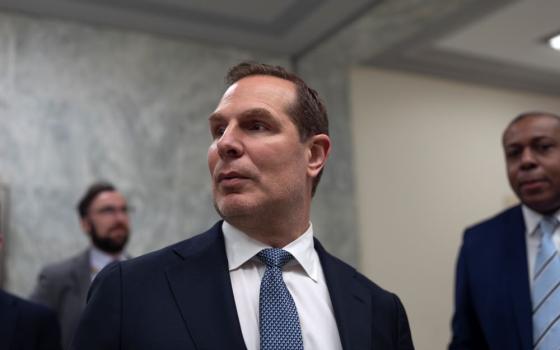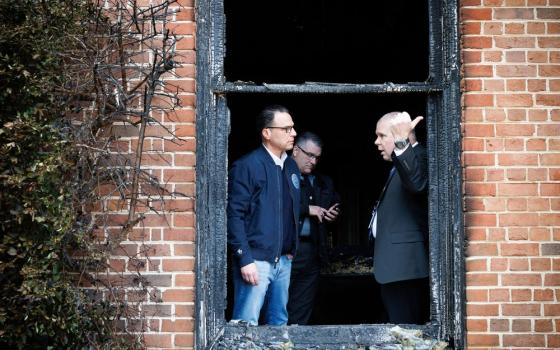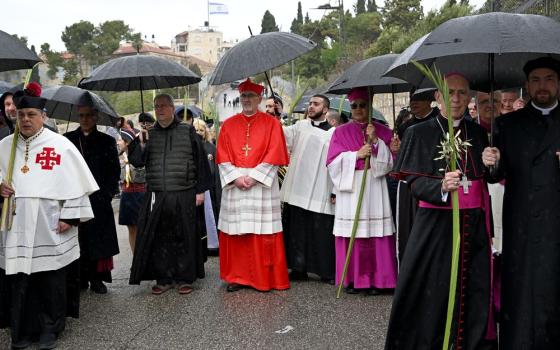By JOHN L. ALLEN JR.
Belmont, North Carolina
Most authors prefer to play their cards close to the chest prior to the release of a new book. On my current “Mega-Trends in Catholicism” project, on the other hand, I’ve chosen to go a different way, working out the main ideas in full public view. My hope is that by the time I sit down to finalize the manuscript, the ideas will be “battle-tested,” having withstood the scrutiny of fairly exhaustive commentary and debate.
This morning I’ll pass along one such bit of comment, on the subject of women in the church.
I’ve been on the road recently in the States making my Power Point presentation on the “Top Ten Mega-Trends in the Catholic Church,” an exercise which so far has been enormously valuable in terms of generating feedback, getting a feel for the weak links in the logical chain, and so on. I was in Seattle last week to deliver the Chrism Day presentation for personnel of the archdiocese on this subject, and I’m in North Carolina today at Belmont Abbey for a similar lecture.
As it stands now, the final list of mega-trends is as follows:
1.tThe North/South shift
2.tSecularism and Catholic identity
3.tIslam
4.tDemographics
5.tWomen and Laity
6.tThe Biotech Revolution
7.tGlobalization
8.tEcology and Natural Resources
9.tChina
10.tPentecostalism
On the topic of women, what I’ve been saying is that in the Catholicism of the 21st century, there will be no movement towards women priests, but there will be continuing pressure for the empowerment of women in all ways that don’t require sacramental ordination. This is hardly an idea original to me; in March 2006 Pope Benedict XVI himself said, “It’s proper to ask if it is possible to offer more space, more positions of responsibility to women.”
The impetus to empower women, I argue, is coming in the North from cultural expectations about gender equity, and in the South from competitive pressures from the Pentecostals, who generally do an excellent job of mobilizing their women. Many religious sociologists report that while Pentecostal communities tend to be organized around a charismatic male preacher, on the ground they are largely directed and administered by women.
As evidence that things within Catholicism are moving in this direction, I’ve pointed to developments such as the fact that, according to the National Association of Church Personnel Administrators, 26.8 percent of top-level diocesan positions in the United States are held by women, and the American bishops recently chose a lay woman to become their next spokesperson, replacing a priest. In the Vatican, women now head a pontifical academy, sit on the International Theological Commission, and serve as a superior in one of the all-important congregations.
The general reaction from my audiences has been that the argument seems plausible as far as it goes. Yet several times I’ve been approached afterwards by pastors and lay personnel in parishes, who have made the following point: Debates over the mobilization of women concern the top-level, most visible positions in the church. In the pastoral trenches, on the other hand, many see almost the opposite problem: at the grassroots, so many positions are already held by women that the real question becomes, how do we mobilize our men?
To take just one case in point, the same National Association of Church Personnel Administrators survey found that 82 percent of the 30,000+ “lay ecclesial ministers” in the United States are women. These are the lay parish administrators, directors of religious education, youth ministers, liturgists, and other church professionals working in full or part-time capacities in America’s 19,000 parishes. Pastoral experience suggests that women are also overwhelmingly more likely to play informal roles in parishes such as volunteer catechists, ministers to shut-ins, and so on.
What I’m being told, in other words, is that the church faces an oddly inverse problem with respect to gender.
At the top, the public “face” of the church is mostly male, creating impressions of a patriarchal system which complicates efforts to communicate church teachings that touch on women’s concerns. Whenever Catholicism talks about reproductive issues or sexual morality, to take the most obvious case, many people in the broader culture suspect male bias. Yet at the grassroots, Catholicism is an institution disproportionately staffed and led by women, with lay men too often inert or only nominally engaged.
The concern that pastors and parish leaders are voicing to me is that the legitimate push to empower women in visible, top-level roles should not distract from equally urgent efforts to mobilize men at the grassroots.
What we really need, they seem to be suggesting, is to meet somewhere in the middle.




